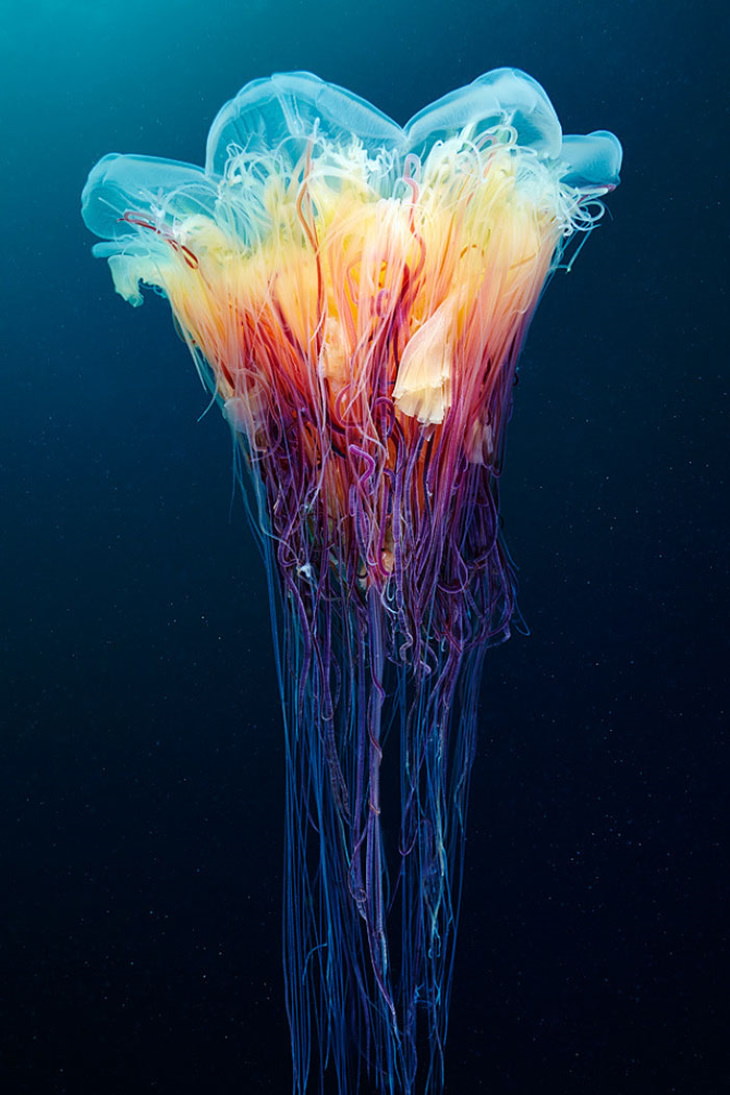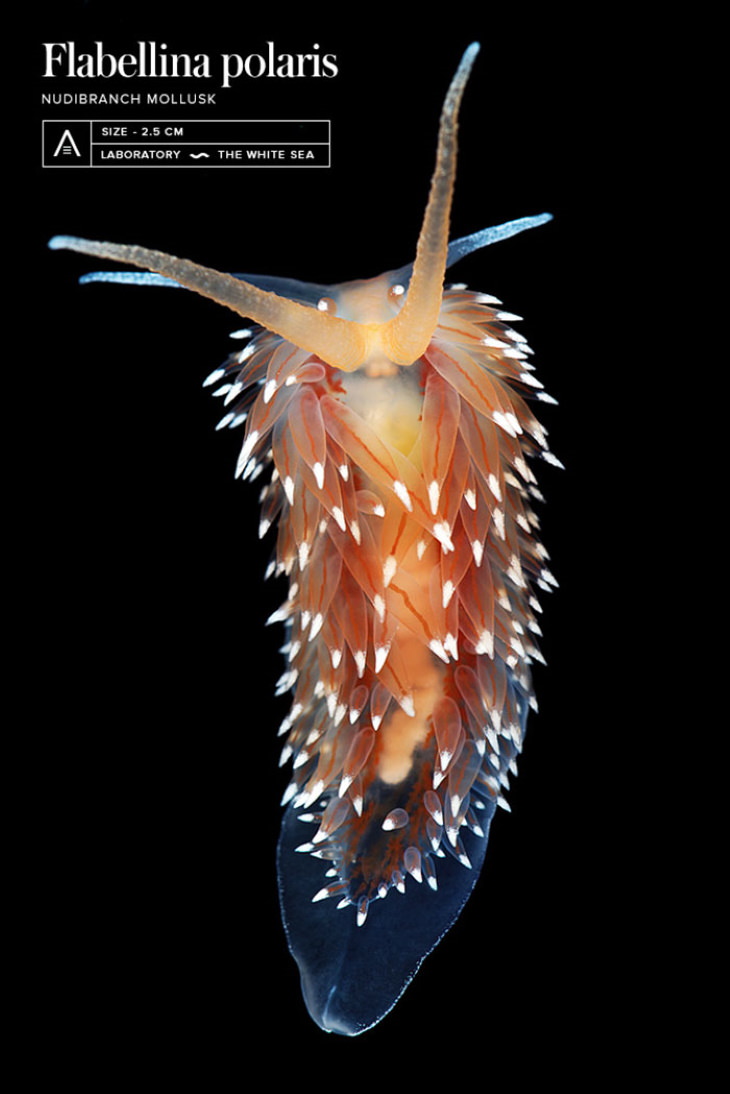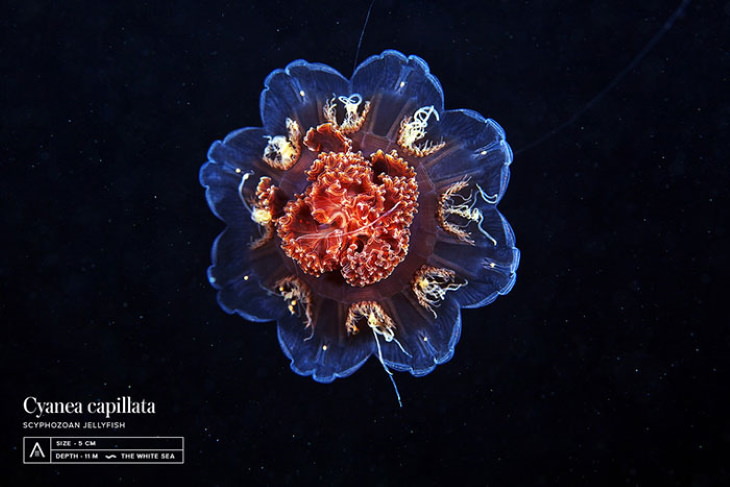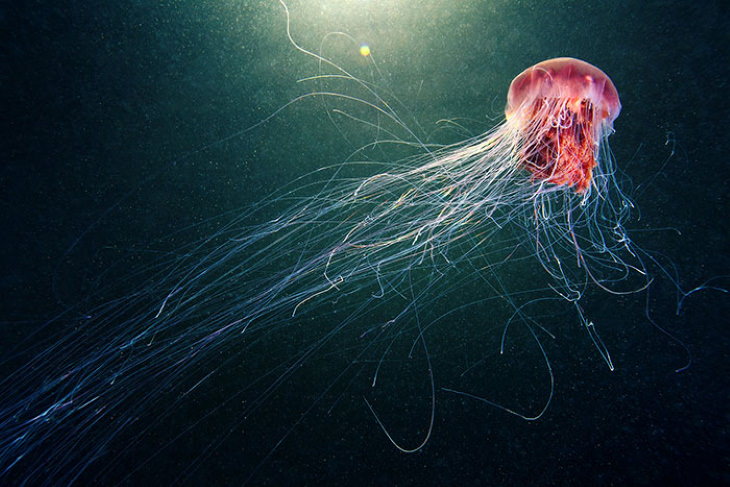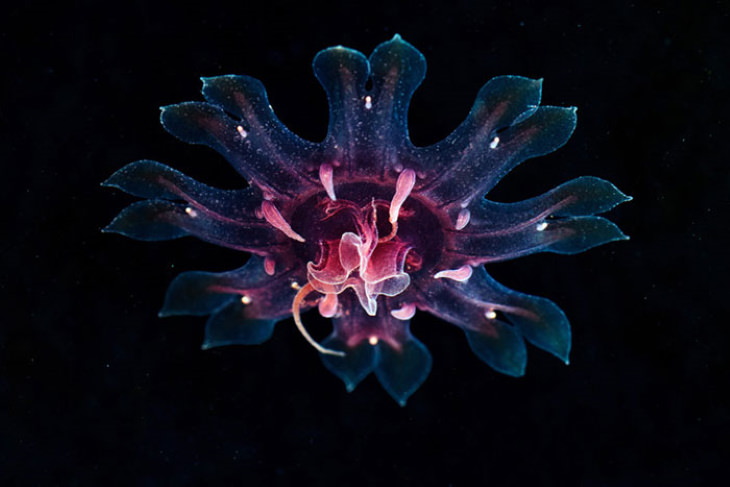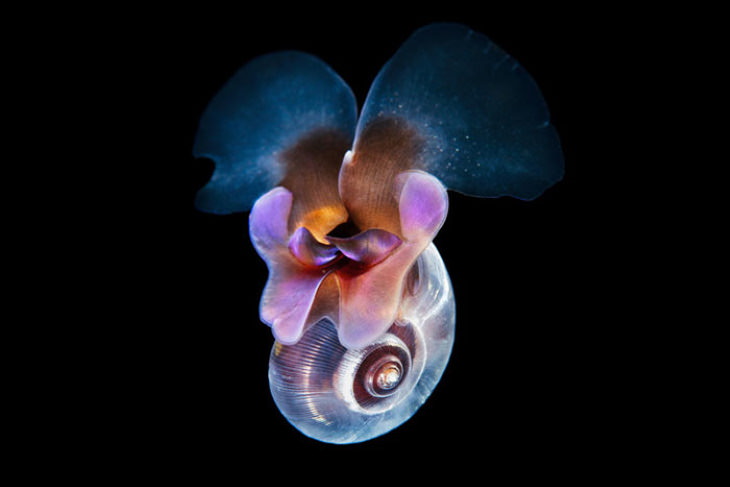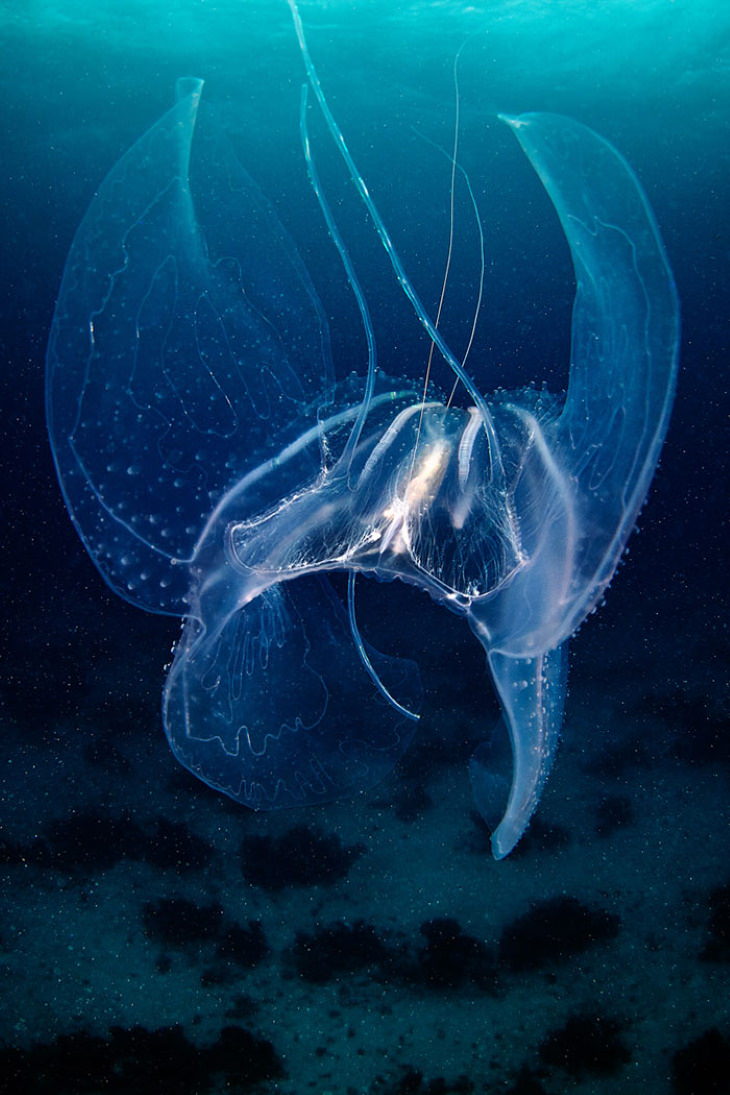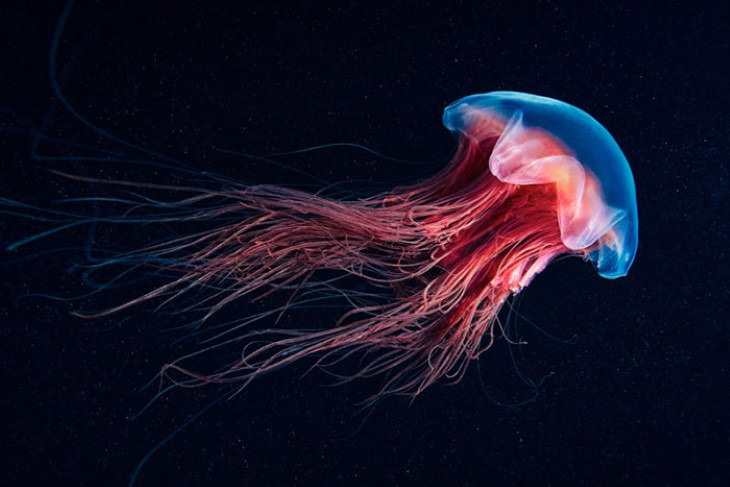Deep beneath the ice covering the White Sea, a subarctic sea on the northwest coast of Russia, lies a secret animal world, a seemingly alien world bursting with color and character. Very few people get to explore these far reaches of our planet, diving deep into the crystal-clear, untouched waters of these lands. Alexander Semenov, a Russian marine biologist turned nature photographer is one of those fortunate few who got the chance to delve into this strange ethereal ecosystem, and he made it his mission to photograph and teach the public about the eerie and yet beautiful underwater creatures that inhabit the White Sea. Here, you will see 15 of Alexander's gorgeous photographs and learn about the creatures pictured in these shots.
1. The lion's mane jellyfish (Cyanea capillata), also known as the giant jellyfish is the largest jellyfish in the world
2. A sea angel (Clione limacina) is also known as the naked sea butterfly and it's a species of sea slugs
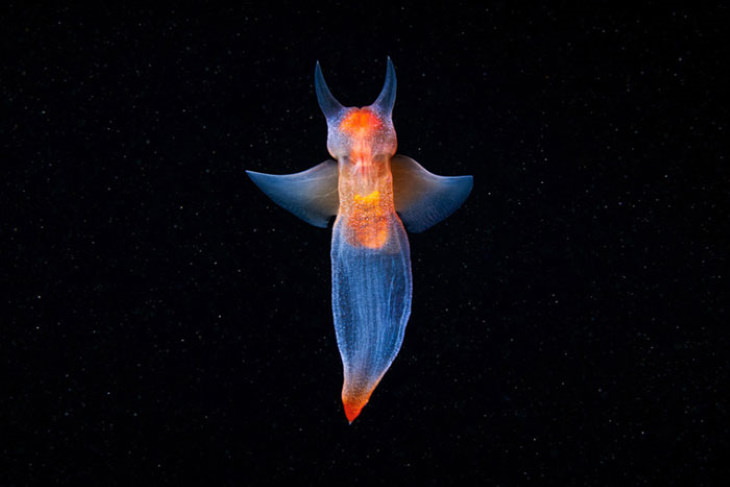
Alexander Semenov is the supervisor of the scientific team at the White Sea biological station of Moscow State University, and he routinely dives into the icy waters of the White Sea to study and photograph the unique animals that live there and cannot be studied in a lab. Semenov is also a professional photographer, and he started taking pictures of the marine fauna he encounters since 2008.
3. A different species of sea slug is Flabellina polaris that can be recognized by their cerata - horn-like formations that cover the upper surface of their bodies
4. Aglantha digitale are small bell-shaped jellyfish that live all across the Arctic and sub-Arctic
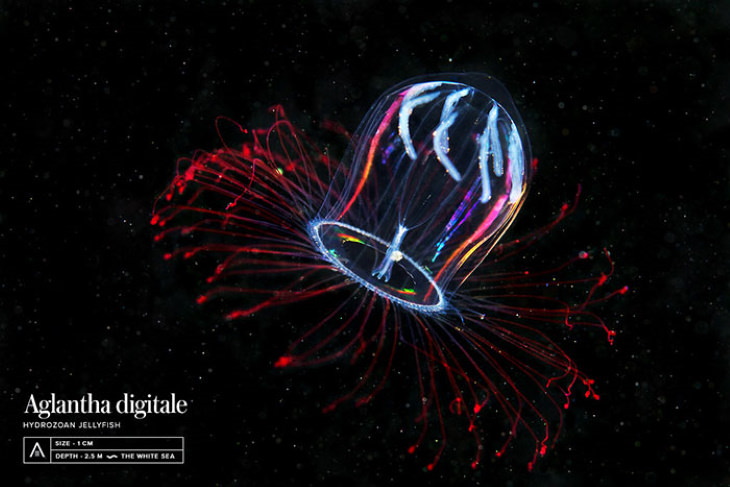
Since then, Semenov's photos have been featured in world-renowned magazines, like National Geographic, Smithsonian, TIME, and Scientific American. But the photographer is also sharing most of his photos on his Flickr page to educate the wide public about the animals that live in the White Sea.
5. A view at the lion's mane jellyfish from above. These creatures can grow to a massive size...
6. The largest specimen of this giant jelly washed ashore in 1865 and had a bell with a diameter of 2.1 meters (7 ft) and tentacles 36.6 m (120 ft) long!
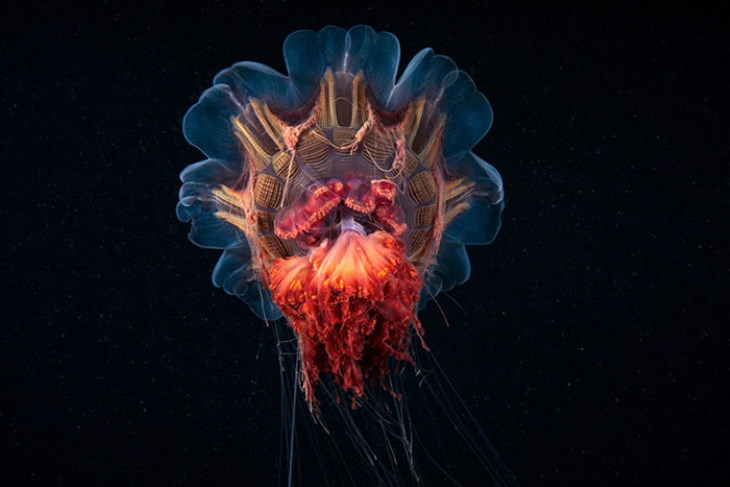
In his Flickr profile, the marine biologist writes, “My personal goal is to study underwater life through camera lenses and to boost people’s interest in marine biology. I do this by sharing all my findings through social media and in real life, through public lectures, movies, exhibitions, and various media events."
7. Lion's mane jellyfish come in various colors ranging from yellow to pink and even dark red. Their coloring can change as they age.
8. This Hyperia galba, a species of zooplankton (white) just became someone's dinner
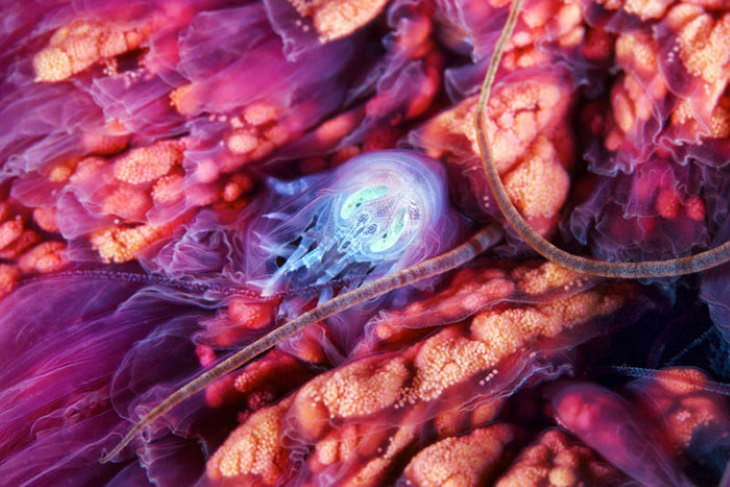
Due to the harsh weather conditions in these subarctic lands, Semenov and his team are only able to shoot a few months every year and the task requires rigorous training and preparation. As the photographer explained in an interview with PetaPixel;
"Going on a dive involves taking an ice drill and special saws out onto the White Sea, where they make triangle-shaped holes in the 0.5 – 1.5-meter thick surface. Dives can only happen in the 40-60 minute intervals between high and low tide because the currents are so strong that a diver who is carried away “is difficult to pull even on a rope."
9. The Giant Lion's Mane jellyfish starts its life cycle as ephyra (pictured below), which are only a few millimeters in size
10. A young Phacellophora camtschatica, commonly known as the fried egg jellyfish or egg-yolk jellyfish is one of the largest species of jellyfish, too
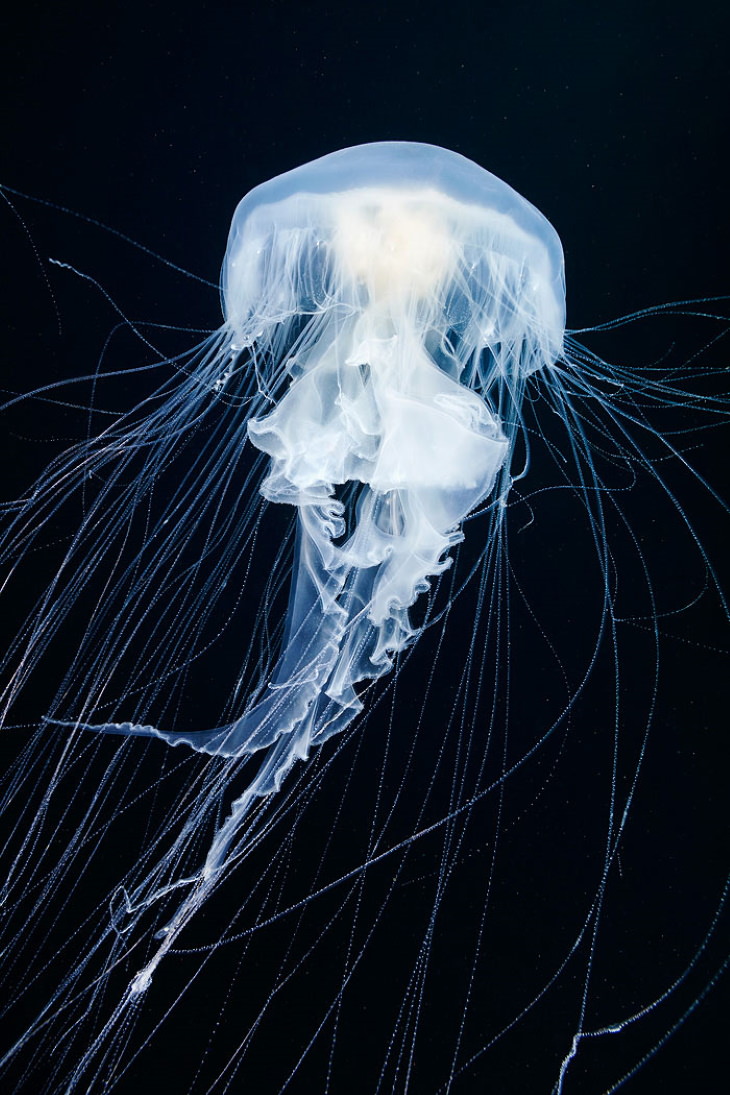
But the hard work definitely pays off, and the crystal clear cold waters of the White Sea make for the perfect shooting environment. And the results, as we all can definitely appreciate, are out of the ordinary.
11. Tubularia indivisa is a species of hydroid, a kind of polyp that lives in the northern reaches of the Atlantic Ocean, the English Channel, the North Sea, and the Norwegian Sea
12. Below you can see the Ribbon jellyfish (Chrysaora), recognized for its long trailing ribbon-like oral arms
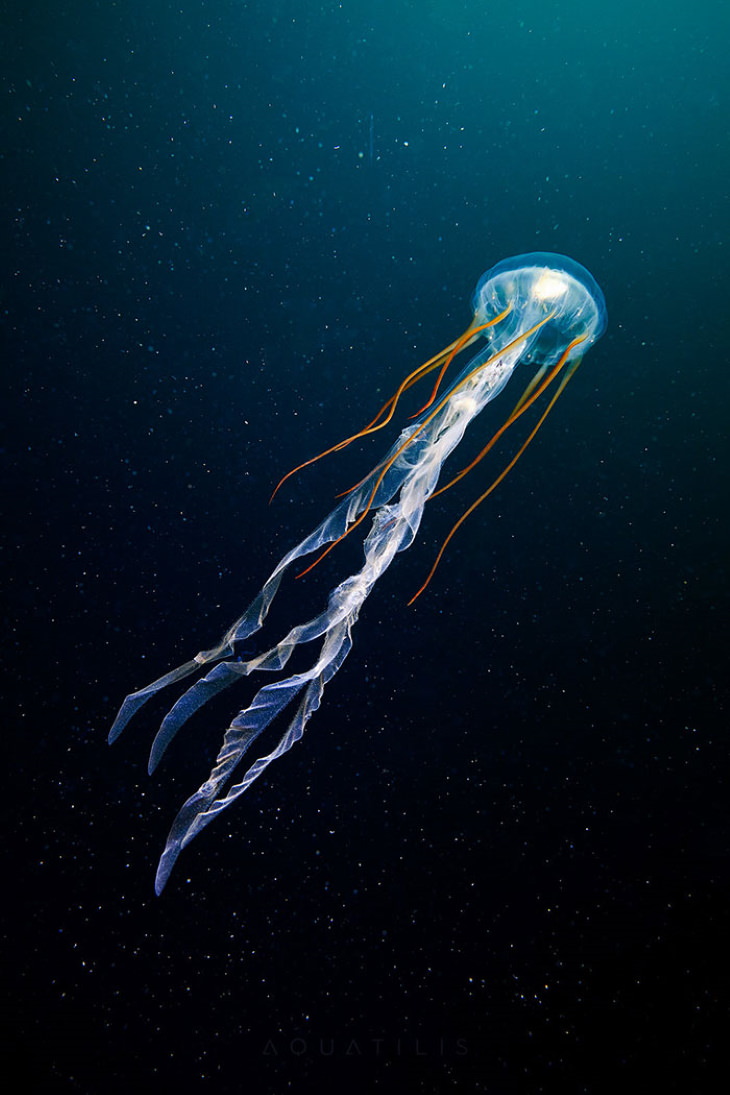
Finally, Semenov points out that during his 13-year-long career, he managed to capture a lot of crucial scientific findings of the life of cold water invertebrates and possibly even previously undiscovered animals. That said, the marine biologist says they barely scratched the surface.
13. Atlanta are a genus of marine gastropod mollusks that come in different sizes and colorings
14. This unusual animal that belongs to the family Leucotheidae, a variety of ctenophore (Comb jellies) - invertebrate marine animals previously believed to be related to jellyfish, but aren't
15. At last, yet another stellar shot of the impressive Lion's Mane Jellyfish!

